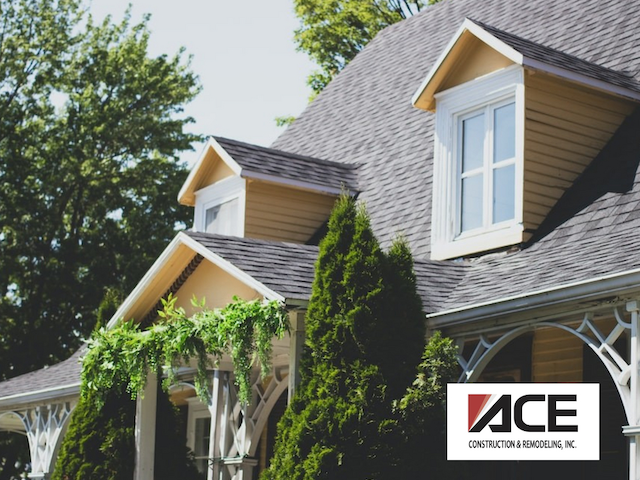Roofing Terminology 101
Like many home improvement or maintenance projects, roofing comes with its own terms and language. That doesn’t mean you have to learn to “speak roofer” before getting estimates and hiring an experienced contractor to get the job done. However, it helps to know a few basic terms so that you understand the project scope and cost. The pros at Ace Construction & Remodeling, Inc. have put together this short cheat sheet to get you started.
Understand Roofer Talk (with the Help of Our Courteous Roofers)!
From shingles to soffits to roof pitch, understanding roofing terminology can make the process clearer and boost your confidence as you discuss the possibilities with your roofing contractor. Plus, the pros at ACE Construction & Remodeling are available to help you understand the meaning behind unfamiliar terminology and what to expect during your roofing maintenance and repair projects.
Some of the most important terms in roofing are defined below:
- Decking: The wooden surface (sometimes plywood) over which we install other roofing materials.
- Eaves: The roof edge that overhangs the exterior wall of your home. It helps direct water away from the siding or cladding. The eaves may be simple or decorative, according to your tastes.
- Fascia: The fascia is typically a board running along the roof’s lower edge. It’s attached to the trusses and supports the bottom row of shingles or tiles. It also holds the gutter system.
- Flashing: Installed around chimney, vents, and any part of the roof vulnerable to water incursion, metal flashing prevents water from penetrating your roof and damaging your home’s structure.
- Pitch: Roof pitch indicates how many inches your roof slopes upward per 12 inches in depth (measured from the roof edge inward to the peak). For example, a roof has a pitch of 6/12. Therefore, it rises 6 inches for every foot toward the ridge.
- Ridge: The highest point of the roof, where two sections of the roof meet, is called the ridge.
- Shingles: Roof shingles are typically made from asphalt or other waterproof materials. They lay on top of the underlayment and protect your home from wind, water, and animal incursion.
- Soffit: The soffit covers the eaves and typically has ventilation holes to help keep your attic well ventilated. It also provides a finished look, giving your home greater appeal.
- Underlayment: This material covers your roofing deck. It lies beneath the shingles and provides protection against moisture incursion. Common materials include polyethylene or polypropylene.
- Valley: This describes the point where two sections of the roof meet inward on a downward slope. The dip or “valley” often sluices away rainwater into your gutter system.
ACE Construction & Remodeling, Inc. provides comprehensive roofing services, including inspections, repairs, and replacement. Contact us today to learn more roofing terminology and get a free quote.





